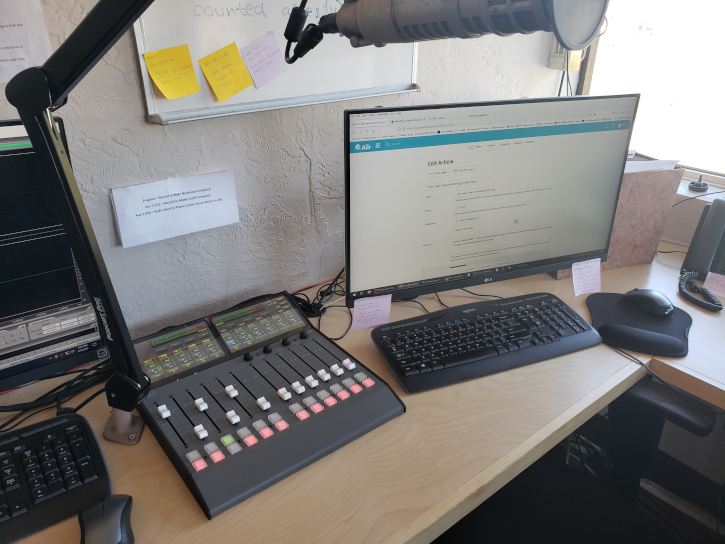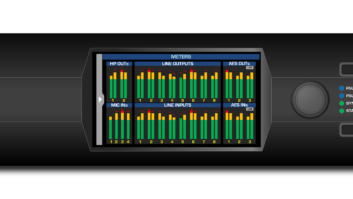
The author is group engineering and IT manager, Frontier Media.
Frontier Media operates radio centers in Alaska and Texas, and we’ve had quite a bit of experience with Logitek equipment over the years.
Our move into AoIP operation began when our Texarkana radio center had a lightning strike that took out basically everything in that studio and we needed brand new everything. With that rebuild, we selected Logitek JetStream Minis and Pilot consoles.
After seeing the advantages and possibilities of what that system can do, it had always been in the back of our minds to transition our Juneau stations to a similar setup one day.
[Read more Radio World articles about audio consoles and mixers]
That “day” arrived in late 2020 when we bought our first Jet67 and mixIT-12 for a new studio we were building out for a brand-new station in the Juneau center.
We completed that installation in January 2021. A couple months later we began working on a renovation of our Juneau newsroom.
Since we’d already gotten one Jet67-mixIT combination, we figured we’d keep building out our AoIP system and get another set for the newsroom. This was also the first studio I’d personally built out from the ground up. The installation of the mixIT and Jet67 in that studio was completed over one weekend in April 2021.
One Cable
Both installations in Juneau went smoothly, with everything working as I had anticipated. I have experience with the JetStream Server programs, which are also used to configure the Jet67 and mixIT, so I had no major hiccups or obstacles.
Cable management is minimal in these installations because you only have to run one single Ethernet cable to the mixIT, which means you’ve only got one cable coming out of the table and connecting to your console, whereas with traditional consoles you might have dozens of cables coming out of your console that can be a hassle to tie all together and make it not look like a rat’s nest.
With a little planning I was able to mount the Jet67 right next to the punchdown block with all its audio sources.
The mixIT packs a punch for its size. We’ve got mixers that are about the same size that don’t do half as much as the mixIT. We’ve also got mixers that can rival what the mixIT can do but they’re a lot bigger, and I imagine cost a good deal more.
Getting up to 16 total analog/mic inputs, up to 16 analog outputs, plus two digital ins and outs, and four total output busses (Program/A1/A2/A3), for the price you’re paying is impressive. Even if you’re not yet tapping into the AoIP networking potential, for the number of inputs and output busses you’re getting solid value for what you’re paying.
On the control surface, all the fader sources are clearly labeled so users know what is where, and it’s easy to switch sources with a couple taps on the touch screen display. Which to me is another advantage of the mixIT; for all the possibilities it offers and how complex you can make it, you can also set it up to be simple from a usability standpoint.
Radio World User Reports are testimonial articles intended to help readers understand why a colleague chose a particular product to solve a technical situation.
Info: John Davis at Logitek Electronic Systems in Texas at 1-713-664-4470 or visit https://logitekaudio.com.







